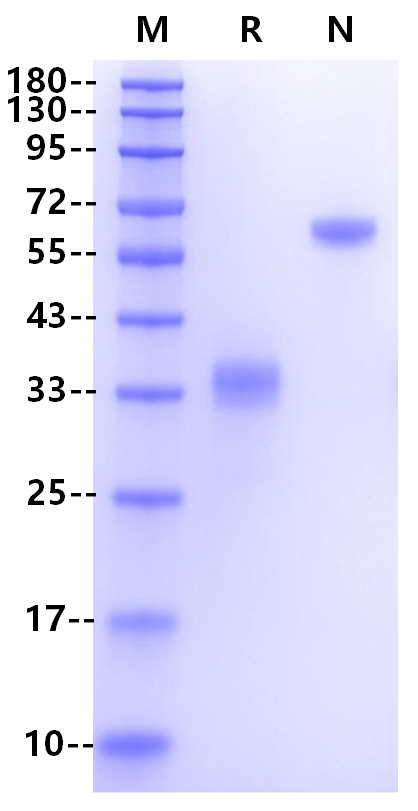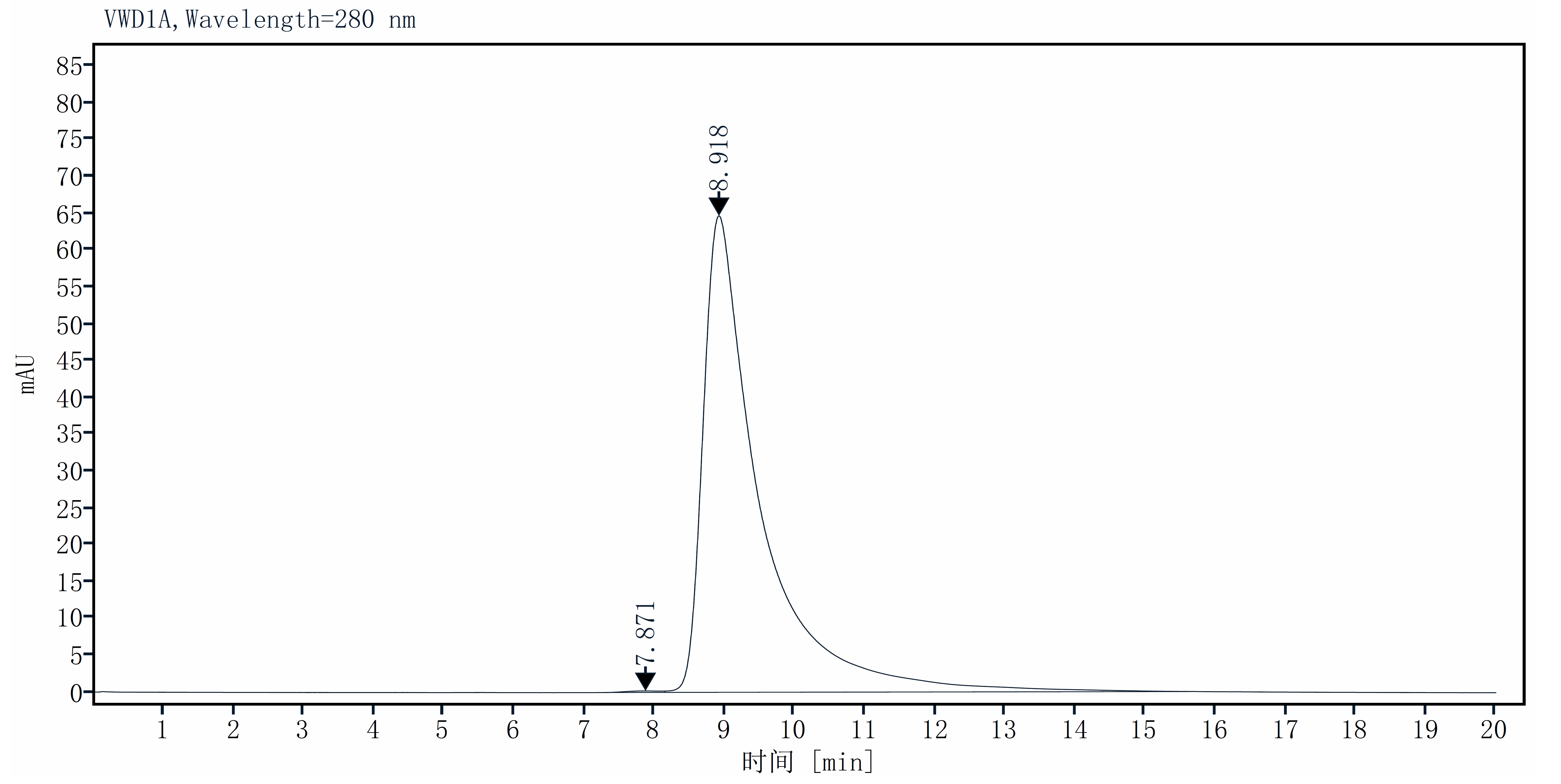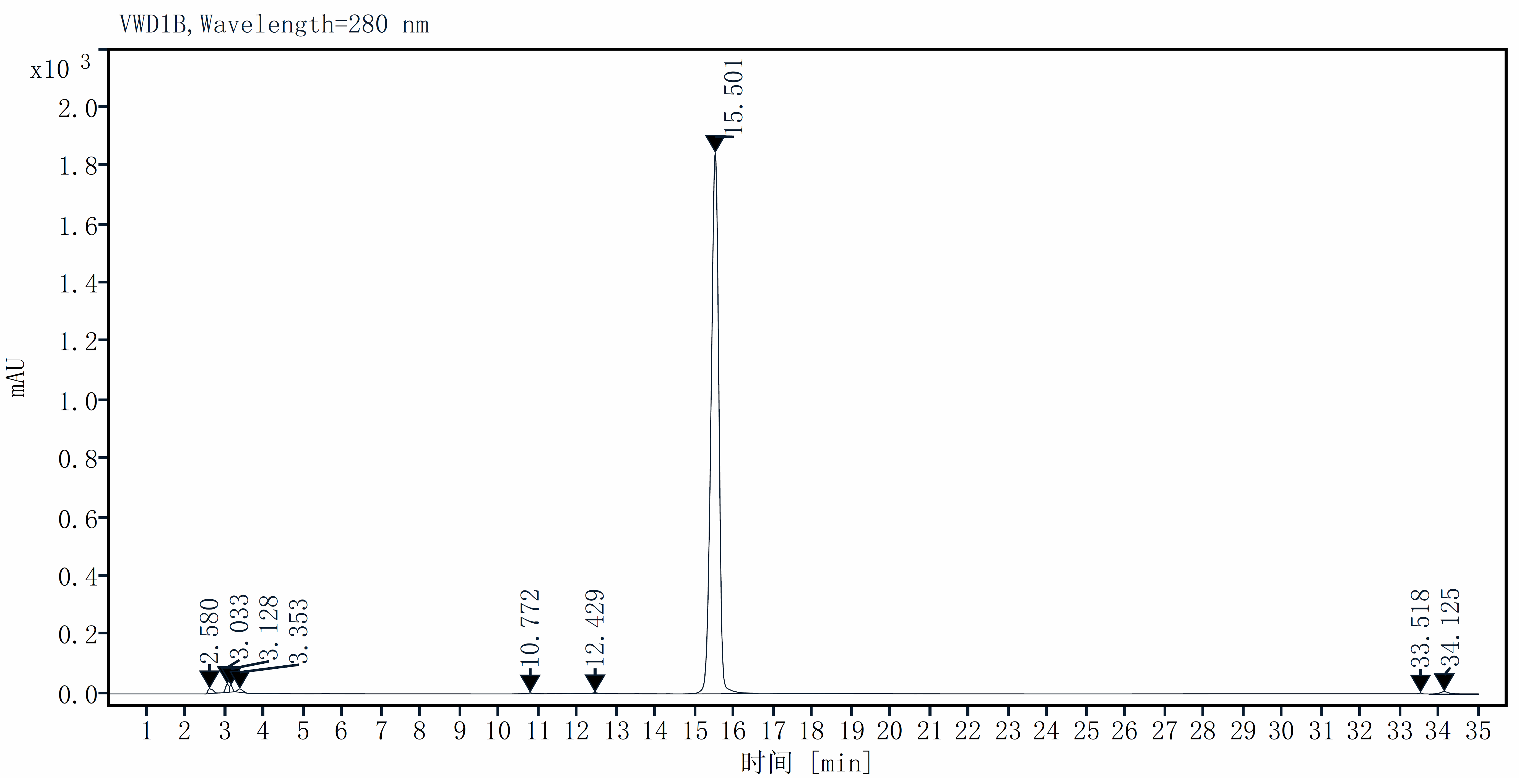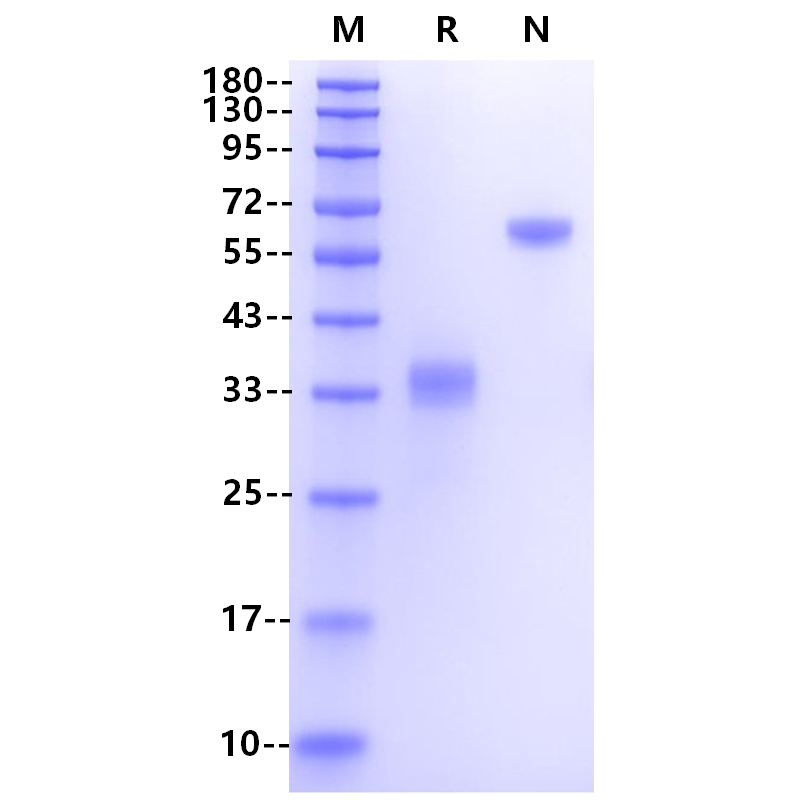Product Details
Product Details
Product Specification
| Species | Mouse |
| Accession | P01867-2 |
| Amino Acid Sequence | EPSGPISTINPCPPCKECHKCPAPNLEGGPSVFIFPPNIKDVLMISLTPKVTCVVVDVSEDDPDVQISWFVNNVEVHTAQTQTHREDYNSTIRVVSTLPIQHQDWMSGKEFKCKVNNKDLPSPIERTISKIKGLVRAPQVYILPPPAEQLSRKDVSLTCLVVGFNPGDISVEWTSNGHTEENYKDTAPVLDSDGSYFIYSKLNMKTSKWEKTDSFSCNVRHEGLKNYYLKKTISRSPGL |
| Expression System | HEK293 |
| Molecular Weight | 32-35 kDa(reducing) |
| Purity | >95%, by SDS-PAGE under reducing conditions |
| Endotoxin | <0.1EU/μg |
| Conjugation | Unconjugated |
| Physical Appearance | Lyophilized Powder |
| Storage Buffer | PBS, pH7.4 |
| Reconstitution | Reconstitute at less than 1 mg/mL according to the size in ultrapure water after rapid centrifugation . |
| Stability & Storage | · 12 months from date of receipt, lyophilized powder stored at -20 to -80℃. · 3 months, -20 to -80℃ under sterile conditions after reconstitution. · 1 week, 2 to 8℃ under sterile conditions after reconstitution. · Please avoid repeated freeze-thaw cycles. |
Background
Immunoglobulin G (IgG) is the main antibody component in normal human serum, which is produced and secreted by B cells. It is a molecule with a molecular weight of about 150kDa. IgG contains two heavy chains (50kDa) and two light chains (25kDa), which are connected by disulfide bonds. After cleavage by pepsin, IgG is divided into F (ab) s with an antigen binding site and a highly conserved Fc fragment. The Fc fragment has a highly conserved n-glycosylation site. There are 5 subtypes of IgG in mice (IgG1, IgG2a, IgG2b, IgG2c and IgG3) and 4 subtypes in rats (IgG1, IgG2a, IgG2b and IgG2c). Some studies have found that IgG2a is superior to IgG1 in activating complements. IgG2 is mainly used to neutralize antigen or block the binding of receptor ligand. In addition, human EGFR antibody IgG2 can mediate ADCC effect through myeloid cells.
Picture
Picture
SDS-PAGE

SEC-HPLC

RP-HPLC



